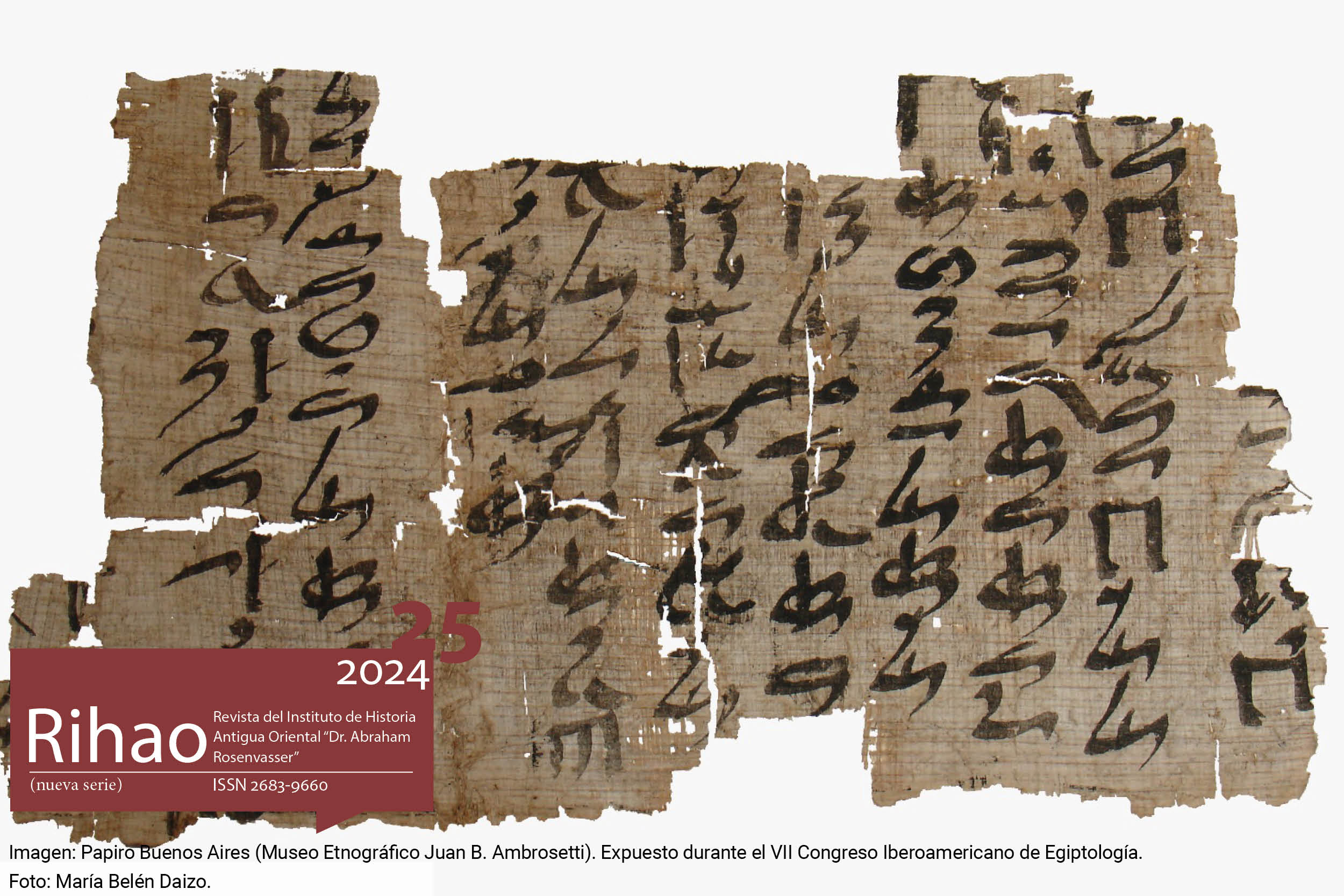The dance scenes in the private tombs at Amarna
Abstract
To the east of the city of Akhetaten there are two necropolises with the tombs of some of the high dignitaries who lived during the reign of Pharaoh Akhenaten. In them, as in the private Theban tombs of the New Kingdom, we can find different scenes of music and dance, thanks to which we can understand the importance of both activities during the Amarna period. This paper presents a brief study of the architecture and decoration of these tombs and will focus on the study of the different dance scenes found in them. These representations, performed by both men and women, can be divided into different groups according to their typology: female orchestras, pantomimic dances, and dance scenes within the royal harem. Each group has its own characteristics, related to iconography and meaning. In addition, they are clearly different from the dance scenes found in other necropolises used during the New Kingdom (such as Thebes or el-Kab), so a comparison between them is necessary to understand the religious and artistic changes that occurred during the reign of Akhenaten.Downloads
References
Almansa-Villatoro, M. V. (2016). La tumba de Meryra II en Tell el-Amarna (AT 2): una nueva aproximación arqueológico-filológica, en: Espacio, Tiempo y Forma, Serie II, Historia Antigua 29: 99-121.
Assmann, J. (1995). Egyptian solar religion in the New Kingdom: Re, Amun and the crisis of polytheism. Londres: Routledge.
Assmann, J. (2005). Death and salvation in ancient Egypt. Ithaca / Londres: Cornell University Press.
Bleiberg, E. (2005). Dance, en: Bleiberg, E. (ed.), Arts and Humanities through the Eras. Ancient Egypt 2657-332 B.C.E. Farmington Hills: Thomson Gale, 64-85.
Bueno, M. (2020). La representación de la danza en las tumbas tebanas privadas del Reino Nuevo egipcio, en: Trabajos de Egiptología 11: 43-62.
Bueno, M. (2021). La representación de la danza en el Reino Nuevo egipcio. Tesis doctoral inédita. Madrid: Universidad Nacional de Educación a Distancia.
Davies, N. de G. (1903). The rock tombs of El-Amarna. Part I: the tomb of Meryra. Londres: Egypt Exploration Society.
Davies, N. de G. (1905a). The rock tombs of El-Amarna. Part II: the tombs of Panehesy and Meryra II. Londres: Egypt Exploration Society.
Davies, N. de G. (1905b). The rock tombs of El-Amarna. Part III: the tombs of Huya and Ahmes. Londres: Egypt Exploration Society.
Davies, N. de G. (1906). The rock tombs of El-Amarna. Part IV: tombs of Penthu, Mahu and others. Londres: Egypt Exploration Society.
Davies, N. de G. (1908). The rock tombs of El-Amarna. Part VI: tombs of Parennefer, Tutu and Aÿ. Londres: Egypt Exploration Society.
Kloska, M. M. (2019). The symbolism and function of the Window of Appearance in the Amarna Period, en: Folia Praehistorica Posnaniensia 24: 77-98.
Laboury, D. (2011). Amarna Art, en: Cooney, K. y Wendrich, W. (eds.), UCLA Encyclopedia of Egyptology. Los Ángeles: UCLA.
Laboury, D. (2012). Akhenatón. El primer faraón monoteísta de la historia. Madrid: La Esfera de los Libros.
Manniche, L. (1991). Music and Musicians in Ancient Egypt. Londres: British Museum Press.
Moran, W. L. (1992). The Amarna Letters. Baltimore: Johns Hopkins University Press.
Owen, G. y Kemp, B. (1994). Craftsmen’s Work Patterns in Unfinished Tombs at Amarna, en: Cambridge Archaeological Journal 4: 121-129.
Peet, T. E. y Woolley, C. L. (1923). The city of Akhenaten I. Londres: Egypt Exploration Society.
Robins, G. (1994). Proportion and style in ancient Egyptian art. Londres: Thames & Hudson.
Roth, S. (2012). Harem, en: Frood, E. y Wendrich, W. (eds.), UCLA Encyclopedia of Egyptology. Los Ángeles: UCLA.
Stevens, A. (2016). Tell el-Amarna, en: Cooney, K. y Wendrich, W. (eds.), UCLA Encyclopedia of Egyptology. Los Ángeles: UCLA.
Teeter, E. (2011). Religion and ritual in ancient Egypt. Cambridge: Cambridge University Press.
Van Dijk, J. (1988). The development of the Memphite necropolis in the post-Amarna Period, en: Zivie, A. P. (ed.), Memphis et ses Nécropoles au Nouvel Empire: nouvelles données, nouvelles questions. París: Editions du CNRS, 37-46.
Van Dijk, J. (2010). El periodo amárnico y el final del Reino Nuevo, en: Shaw, I. (ed.), Historia del antiguo Egipto. Madrid: La Esfera de los Libros, 359-410.
Vogelsang-Eastwood, G. (1993). Pharaonic Egyptian Clothing. Leiden: Brill.
Copyright (c) 2024 Miriam Bueno Guardia

This work is licensed under a Creative Commons Attribution-NonCommercial 4.0 International License.





.jpg)







